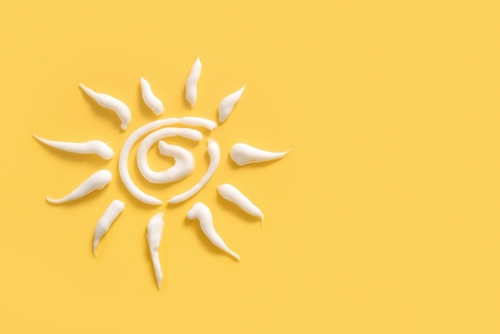A Sun-Kissed Awakening
The sun has always been a source of comfort for me—its warmth on the skin, the way it dances through leaves, the soft golden glow it casts across the garden in the late afternoon. But for years, I struggled with how to protect my skin from its harsher effects.
Chemical sunscreens often left me with breakouts, stinging eyes, or a lingering scent that felt more like a lab than a beach. As someone with sensitive skin and a love for simplicity, I longed for sun protection that felt more like care and less like combat.
That search led me to the gentle power of mineral sunscreens, like zinc oxide and titanium dioxide. These natural alternatives not only protect the skin effectively—they do so with grace, forming a physical barrier that feels soft, breathable, and kind.
Let’s shed light on what chemical sunscreens really are, and why mineral options can offer a safer, more harmonious choice for skin and soul alike.
Ad Banner #1
Placeholder for promotional content or advertisement.
Chemical Sunscreens: A Closer Look
Most conventional sunscreens rely on chemical UV filters such as oxybenzone, avobenzone, octinoxate, and homosalate. These ingredients work by absorbing UV rays and converting them into heat, which is then released from the skin.
But here’s where things get complicated:
-
Sensitivity: Many people (myself included) experience irritation, redness, or breakouts after using chemical sunscreens—especially those with acne-prone or reactive skin.
-
Endocrine Disruption: Certain ingredients, like oxybenzone, have raised concerns over potential hormonal effects in both humans and wildlife.
-
Environmental Impact: These same ingredients have been shown to damage coral reefs, prompting bans in places like Hawaii and Palau.
The more I learned, the more I realized that protecting my skin shouldn’t come at the cost of my health—or the ocean’s.
Mineral Sunscreens: Earth-Derived Defense
Mineral (or physical) sunscreens offer a gentler approach. They sit on the skin’s surface and reflect UV rays rather than absorbing them. The most common natural sun blockers are:
Zinc Oxide
-
Broad-spectrum protection (UVA + UVB)
-
Naturally soothing, with mild antimicrobial benefits
-
Gentle enough for babies and sensitive skin
Titanium Dioxide
-
UVB and short-wave UVA protection
-
Often paired with zinc for full coverage
-
Lightweight and ideal for oily skin types
These minerals are powdered forms of natural elements and are non-comedogenic, meaning they won’t clog pores. When formulated well, they leave little to no white cast and blend beautifully into the skin—especially when paired with botanical oils or tinted with iron oxides.
How Mineral Sunscreens Feel on the Skin
The first time I applied a homemade zinc oxide blend, I expected something thick and chalky. What I felt instead was silky, cooling, and subtly matte—like a soft veil over my skin. When infused with soothing ingredients like aloe vera, shea butter, or raspberry seed oil, these formulations become more than protective—they become deeply nourishing.
I often use a handmade balm with non-nano zinc oxide, jojoba oil, and a hint of chamomile extract. It glides on like a dream and leaves my skin feeling balanced and comforted, never coated.
Ad Banner #2
Placeholder for second promotional content or advertisement.
Beyond Zinc: Additional Natural SPF Helpers
While mineral sunscreens are the most reliable natural protectors, there are other ingredients that support the skin’s resilience to the sun:
-
Raspberry Seed Oil: Naturally high in antioxidants and offers mild UV protection—perfect as a booster but not a standalone sunscreen.
-
Carrot Seed Oil: Contains carotenoids that help neutralize oxidative stress, though SPF claims are often exaggerated.
-
Green Tea Extract: Rich in polyphenols, helps reduce inflammation and sun-induced damage.
These ingredients aren’t replacements for proper SPF, but they add nourishment and reinforcement, making them lovely additions to post-sun care routines or sun-safe formulations.
A Note on Application and Reapplication
Mineral sunscreens can rub off with sweat, swimming, or towel drying, so reapplication every two hours is key—especially outdoors. Look for formulations labeled “water-resistant” if you plan on being active.
And yes, some mineral sunscreens may leave a slight white cast, particularly on deeper skin tones—but more brands are now creating tinted versions with iron oxides that blend seamlessly while offering extra protection against blue light.
Always choose non-nano versions of zinc oxide and titanium dioxide to avoid potential inhalation concerns and ensure the minerals remain on the skin’s surface, where they’re most effective.
Embracing Sun Protection as a Ritual
Sun care doesn’t have to feel clinical or synthetic. It can be a daily ritual of tenderness—massaging a balm into your skin, inhaling the soft herbal notes, knowing that you’re guarding your glow naturally.
I keep a small pot of homemade SPF balm in my bag, nestled beside my herbal lip salve and a sprig of lavender. It’s part of my rhythm now—a quiet way of saying, I’m caring for myself and the earth around me.
If you’ve struggled with traditional sunscreens, or simply want to move toward a more holistic approach, mineral options are a beautiful place to begin. Gentle, effective, and earth-rooted, they remind us that sun protection can be both a shield and a salve.



























